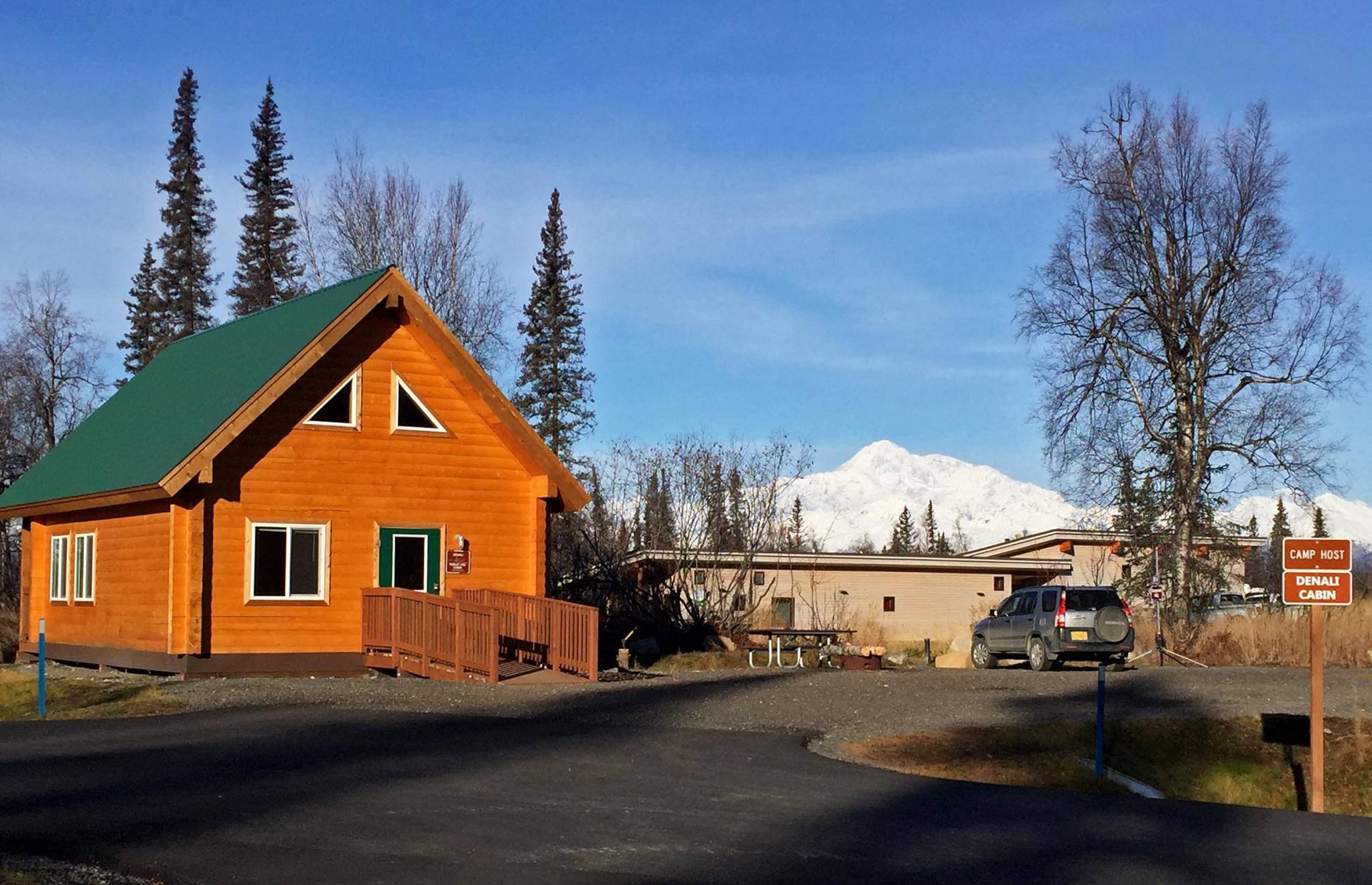Alaska’s public use cabins are really popular.
Rentable cabins of all shapes and sizes occupy corners all over state and federal park lands in Alaska, luring visitors all year round. The Kenai Peninsula has more than two dozen of them between the cabins maintained by the Kenai National Wildlife Refuge, the Chugach National Forest and the Alaska Division of Parks and Outdoor Recreation. Altogether, the state maintains 66 across the state from Fairbanks to Southeast, and the federal land managers in other refuges, parks and forests maintain others.
While some of the more remote ones can be available on any given date with a few days’ notice, ones with easy access are liable to be booked every weekend for a year out. The Alaska State Parks system is interested in building a few new ones to harness that popularity.
In Gov. Bill Walker’s proposed fiscal year 2019 budget, the Division of Parks and Outdoor Recreation has asked for a capital project appropriation of $300,000 to build five new public use cabins in high-demand areas around the state. The division hasn’t quite decided where they would put them yet if the funds are granted, said Division of Parks and Outdoor Recreation Director Ethan Tyler in a presentation to the Legislature’s Senate Resources committee on Monday.
“Strategically locating those … so that they’re in areas that see high demand and that their accessibility is such that they would have a quick payoff time for the division,” he said.
The division administration would work with the local superintendents, local park advisory boards and park management plans to develop locations, according to the capital funding request submitted to the Legislature.
“Public Use Cabins are in increasingly high demand by Alaskans and visitors,” the request states. “Particularly, demand for (cabins) that are (disability) accessible, on the road system and close to major population centers has grown significantly in recent years; cabins built in the last five years meeting these criteria are among the busiest in the park system.”
It’s not just the state’s public use cabins seeing high traffic. In the Chugach National Forest, which stretches from Valdez to Cooper Landing and north toward Anchorage, the occupancy rates at the public use cabins vary from 4 percent to 100 percent, said spokesperson Alicia King. The most frequently occupied cabins are typically the easily accessible ones, like Crow Pass, which has a 99 percent occupancy rate, and Spencer Bench, which is booked by the Alaska Railroad Corporation in the summer and has a 100 percent occupancy rate, she said.
“The Spencer Bench (cabin), people hover at their computers at midnight, waiting to make that reservation,” she said. “And there are other cabins like that, Crow Pass, (for example). People are just waiting to get in there.”
The Chugach National Forest, along with the other national forests in Alaska, is in the process of increasing its fees for public use cabins over the course of three years. That’s in part to help cover maintenance — the fees don’t cover maintenance right now, King said. The Forest Service relies on volunteer effort to help maintain the cabins and for people to be respectful when they use them, she said.
“When you consider taking materials in to where some of the cabins are, that can be expensive,” she said. “We do very much depend on people to be respectful and to be mindful … sometimes people will leave like a sleeping bag or something they think will be useful to other hikers. (We ask them to) just take it out.”
The state’s public use cabins require relatively little maintenance and rely on primarily user fees for that. Tyler said the cabins with higher occupancy rates tend to pay themselves off after a few years and become only a source of revenue for the Division of Parks and Outdoor Recreation.
“In some of our cabins, we have peak occupancy that exceeds 85 percent,” he said. “ I know hotels that would be pretty happy with an 85 percent occupancy rate.”
The state park system raised its fees for the cabins in summer 2014, with fees now ranging between $35 per night to $100 for some of the most accessible and popular cabins. With about 45 percent occupancy throughout the year, public use cabins pay for themselves, according to Parks’ capital project request. The new cabins would be targeted for areas where they’d see more than 50 percent annual occupancy, according to the request.
Tyler, who took over as director of the division in July, said one of his goals for the Division of Parks and Outdoor Recreation was sustainability. In accordance with that, he said he was working to make the division more reliant on receipts rather than undesignated general fund dollars. The division is working on pricing structure for the cabins to make it more consistent and increase occupancy, as well as working on more partnerships with the tourism industry to increase use of the parks. The state issued 626 commercial user permits in 2017, he said.
“My goal is to get that number to increase and have more partnerships with some of our visitor industry partners,” he said. “Those are fishing guides, tour guide companies, water taxis, motor coach and van tours, hiking guides and the like. There’s a really diverse group of people who utilize our parks for business.”
Reach Elizabeth Earl at elizabeth.earl@peninsulaclarion.com.

